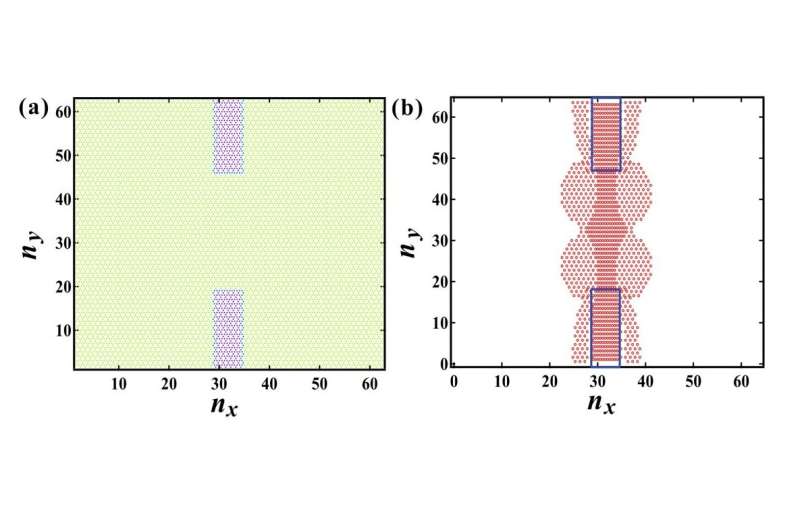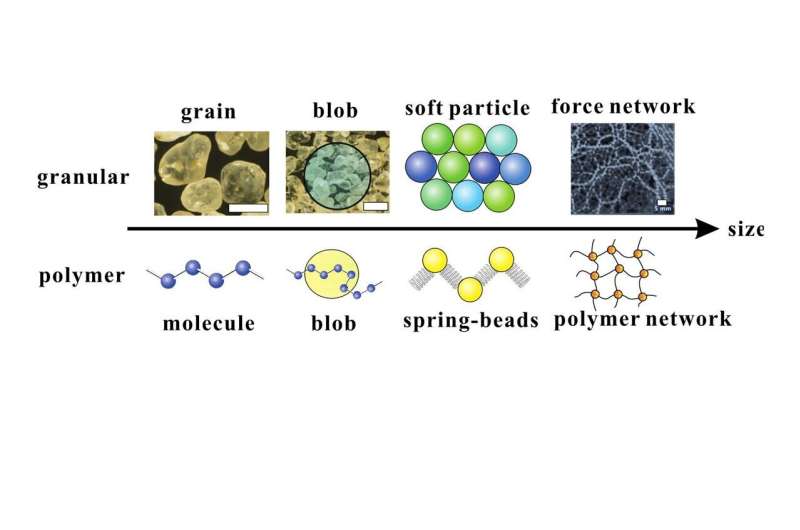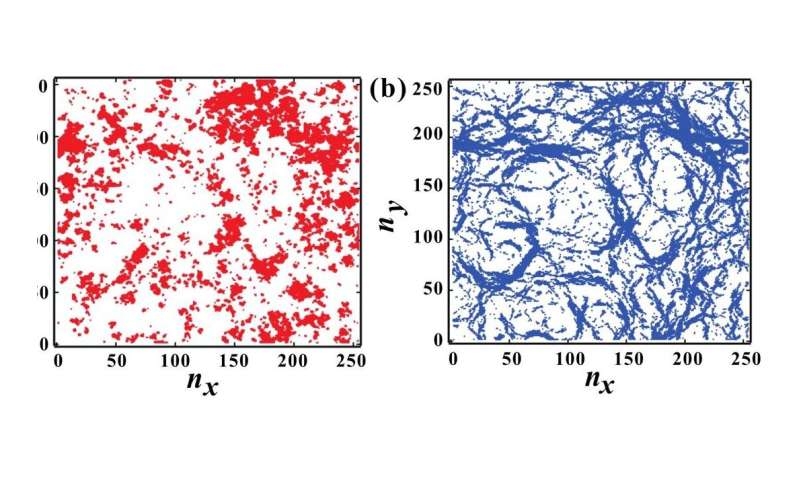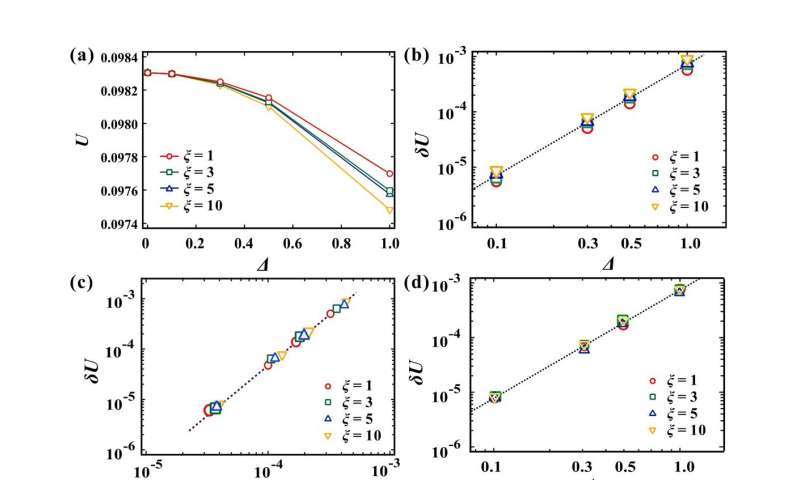This article has been reviewed according to Science X's editorial process and policies. Editors have highlighted the following attributes while ensuring the content's credibility:
fact-checked
peer-reviewed publication
trusted source
proofread
Variety in building block softness makes for softer amorphous materials

Scientists from Tokyo Metropolitan University have created a new model for disordered materials to study how amorphous materials resist stress. They treated groups of atoms and molecules as squishy spheres with varying softness.
Putting their model under a load, they discovered unexpected disparities between harder regions and where forces were concentrated, with areas in between such regions "hardening" to produce elongated "force chains." Their findings, appearing in Scientific Reports, promise new insights into designing better materials.
When it comes to building hard materials, using hard ingredients is not enough. For example, when concrete fails during earthquakes, the forces which are generated become focused in certain places, causing cracks to form. The transmission of forces through amorphous solids like concrete and cement is known to follow well-defined paths known as "force chains."
Deciphering how they emerge would go a long way to understanding how such solids behave under stress, but it is not yet known how they emerge, and how they relate to material properties.
This inspired a team of researchers from Tokyo Metropolitan University led by Professor Rei Kurita to build simple, tractable models of amorphous materials which might teach us how force chains form. Instead of simply simulating the motion of all atoms in some material, they decided to represent groups of atoms with spheres of varying stiffness, reflecting how those groups respond to forces.

The materials they studied were then characterized by how much the stiffnesses varied over space, and how broad the patterns of hard and soft regions were.
Deforming their array of squishy particles, they first looked for whether local stiffness correlated with force chain transmission. Initially, it seemed like there was a clear correlation between harder regions and force chains. However, further analysis reveals that force chains are more string-like in their shape, and don't correlate as well with isolated hard regions.
To understand this discrepancy, the team studied a simpler model of two stiff regions separated by a softer region, finding that the softer region becomes denser, generating the high forces required to keep the chain going. This is a first glimpse into the fundamental mechanics of how force chains connect.
-

Distributions of harder regions (left) and force chains (right). Though they do correlate, force chains connect into string-like structures. Credit: Tokyo Metropolitan University -

(a) Energy due to particle interactions drop off with larger variations in particle stiffnesses, and the length scale over which patterns in stiffness persist (xi in the legend). (b) The change in energy scales in a specific way with variation in stiffness. (c) The same scaling is found for variations in density. (d) Quantities can be rescaled to show they all reflect the same physical principles. Credit: Tokyo Metropolitan University
But how do these variations affect the properties of the material? It turns out that larger variations in softness and broader soft/hard regions both lead to consistently softer materials, as do larger variations in local density. The conclusion we can draw is that even with the same building blocks, amorphous materials with a more uniform stiffness gives a harder material due to more even distribution of the force chains.
While the emergence of stiffness variations in real materials remains unexplored, the team hopes their new model and mechanism pave the way for design principles to make better materials.
More information: Rei Kurita et al, Formations of force network and softening of amorphous elastic materials from a coarsen-grained particle model, Scientific Reports (2024). DOI: 10.1038/s41598-024-59498-2
Journal information: Scientific Reports
Provided by Tokyo Metropolitan University





















